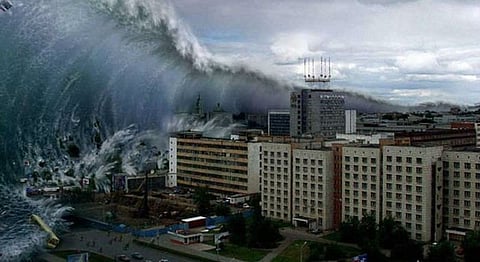
- HOMEGROWN WORLD
- #HGCREATORS
- #HGEXPLORE
- #HGVOICES
- #HGSHOP
- CAREERS
- ABOUT US
- CONTACT US

On Monday, October 26, sometime between 12pm and 12:10pm, a deep siren rung across South Mumbai through Ballard Estate and Nariman Point, up to Crawford Market and Fort. This loud and purposeful hoot represented the successful local trial of Mumbai’s Tsunami Early Warning System -- an important step towards coastal safety in the face of possible natural disasters.
This system, installed at the Meteorology Office of Western Naval Command by the Indian National Centre for Ocean Information Services (INCOIS)--an autonomous body under the Ministry of Earth and Sciences, Government of India -- has a siren and digital electronic board to issue early warning in case of any tsunami threat in the Indian Ocean region. Seven tsunami buoys with sensors will record the height and speed of waves, and alert the monitoring centre in Hyderabad in case of any such threat. Following the alert, this centre will set off the remotely controlled siren to alert places that might be affected.
In the event that such a warning signal is given to the Brihanmumbai Municipal Corporation (BMC), the Indian Navy along with disaster management authorities will have time to prevent possible damage that could be caused by the tsunami. The warning siren will hoot for a whole minute, and has a radical range of three kilometers in all directions. The Regional Meteorological Command’s Captain, KLV Prabhakaran, stated during the testing on Monday, “In case of a tsunami warning, this office, which is manned 24x7, gets the information and immediately passes it on to the local authorities and the Navy to prevent a disaster.” The response of such hotlines connected to the siren along the coast was tested with positive results with Monday’s siren.
As this drill was successful, regular testing of a similar nature will continue between 12pm and 12:10pm on the second and fourth Saturday of every month starting November 1. This advance comes nearly 11 years after the last Great Sumatra earthquake and Indian Ocean Boxing Day tsunami in 2004 that devastated the Andaman and Nicobar islands along with states such as Kerala, Tamil Nadu and other southern and east coast areas, marking an important step for cities like Mumbai where a large population lives along the coastline.
